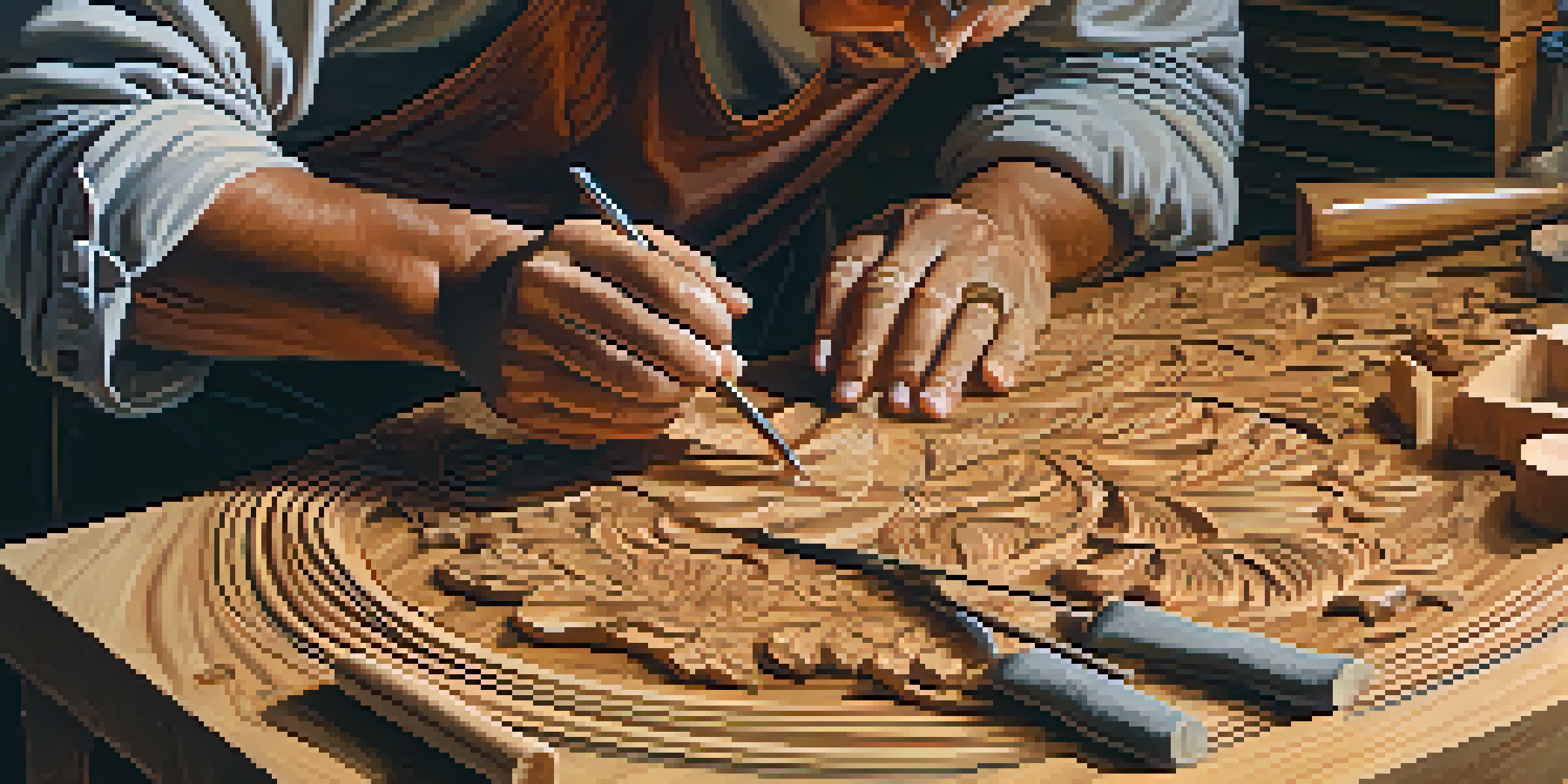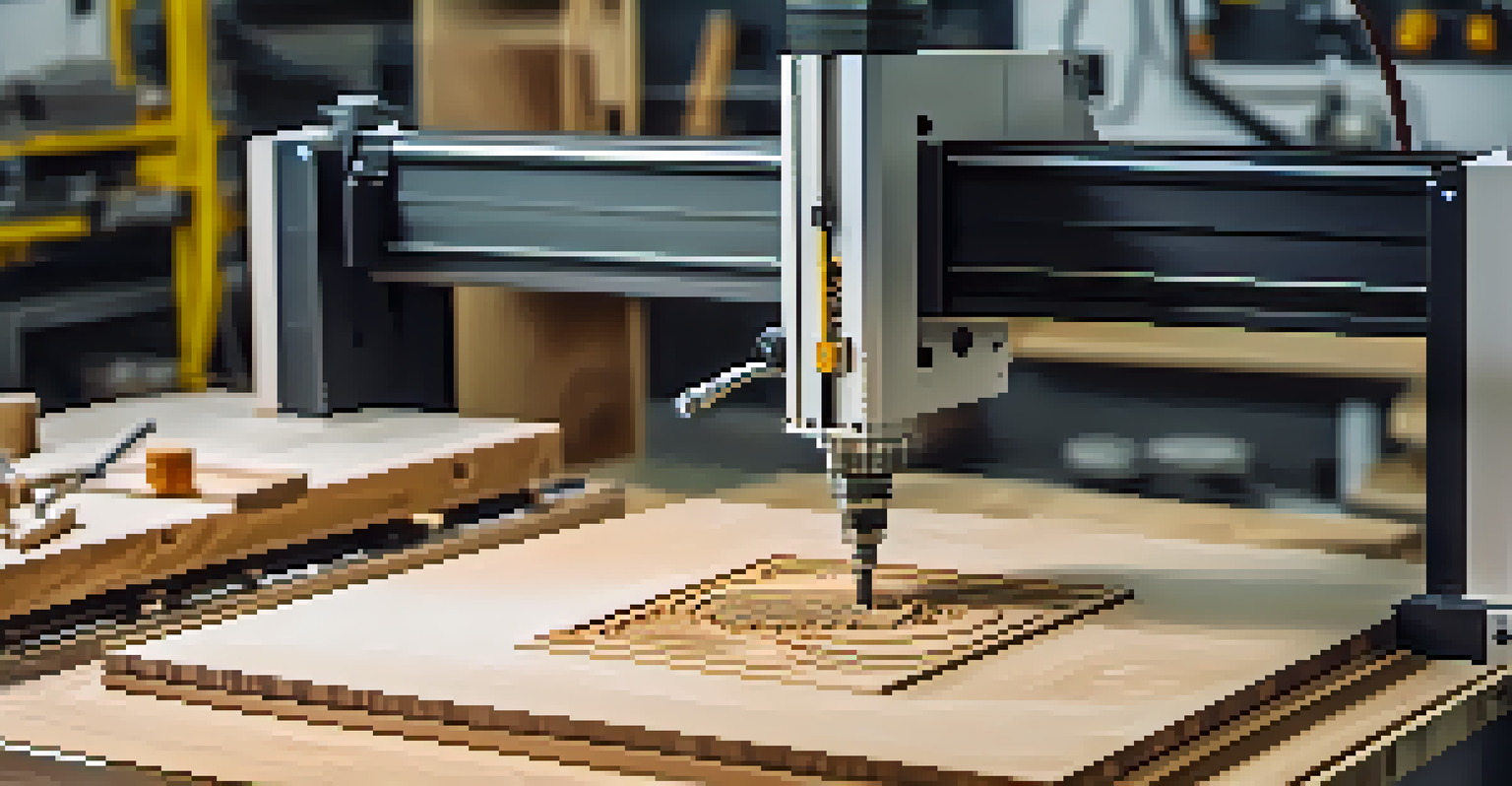The Future of Carving: Blending Tradition with Technology

Understanding Traditional Carving Techniques
Traditional carving is an ancient art form that has been passed down through generations. It involves the meticulous removal of material from a solid block—be it wood, stone, or other mediums—to create intricate designs. This craft not only reflects the skills of the artisan but also encapsulates cultural heritage, telling stories through every chisel mark.
Art is the most beautiful of all lies.
For example, the intricate wood carvings found in various cultures often depict local folklore or significant historical events. Each piece is unique, showcasing the artisan's creativity and craftsmanship. As we explore the future of carving, it's essential to appreciate the roots and skills that have shaped this art form over centuries.
While traditional methods are still widely practiced, there is an evolving conversation about how to preserve these techniques while embracing modern advancements. This balance between honoring the past and welcoming innovation is crucial for the future of carving.
Technological Innovations in Carving
As technology advances, so too does the world of carving. Tools like CNC (Computer Numerical Control) machines have revolutionized the industry, allowing for precision that was previously unattainable with hand tools alone. With a CNC machine, artisans can create complex designs quickly and accurately, reducing the time spent on each project.

Additionally, 3D printing technology is making waves in carving by enabling artists to experiment with new forms and materials without the constraints of traditional methods. Imagine a sculptor designing a piece on a computer and then printing it in a matter of hours! This not only expands creative possibilities but also democratizes access to the art of carving.
Balancing Tradition and Technology
The evolution of carving hinges on integrating modern tools like CNC machines while honoring the craftsmanship of traditional methods.
However, the integration of technology raises questions about authenticity and the value of handcrafted work. Striking a balance between these modern tools and traditional skills is essential to ensure that the artistry of carving continues to thrive.
The Role of Digital Design in Carving
Digital design software has opened new avenues for carvers, allowing them to visualize their ideas before they begin the actual work. Programs like Adobe Illustrator or AutoCAD enable artists to create detailed templates and models, which can serve as guides during the carving process. This not only enhances creativity but also minimizes errors and material wastage.
The only way to do great work is to love what you do.
For instance, a carver can design a piece digitally, adjusting dimensions and details until they achieve the perfect look. Once satisfied, they can either carve it by hand using the digital template or transfer the design to a CNC machine for production. This blend of technology and traditional skills can lead to stunning results.
Moreover, the ability to share designs online opens up collaborative opportunities for artists worldwide. The digital realm fosters a community where ideas can flow freely, inspiring new techniques and styles that honor both tradition and innovation.
Sustainability in Modern Carving Practices
Sustainability is becoming an increasingly important focus in the world of carving, especially as artisans seek to minimize their environmental impact. By utilizing eco-friendly materials and sustainable sourcing practices, carvers can create beautiful pieces while respecting the planet. This shift is crucial in an era where environmental concerns are at the forefront of many industries.
For example, some artists are turning to reclaimed wood or sustainably harvested materials for their carvings. This not only reduces waste but also gives new life to materials that might otherwise be discarded. Incorporating technology can enhance these efforts by improving material efficiency and reducing waste during the carving process.
Sustainability in Carving Practices
Artisans are increasingly adopting eco-friendly materials and sustainable sourcing to minimize their environmental impact.
Ultimately, marrying traditional techniques with sustainable practices offers a way forward that honors the past while caring for the future. As more artisans adopt these principles, we can expect a positive shift in the carving landscape.
Emerging Trends in Carving Styles
As the fusion of technology and tradition continues, new carving styles are emerging that reflect contemporary aesthetics and cultural influences. Artists are experimenting with mixed media, combining traditional carving techniques with materials like resin, metal, or glass. This innovation leads to striking, one-of-a-kind pieces that challenge conventional ideas of what carving can be.
Moreover, the rise of social media platforms allows carvers to showcase their work to a global audience, gaining feedback and inspiration from diverse cultures. This exposure often influences new styles and techniques, encouraging artists to push their boundaries and explore fresh ideas.
These evolving trends highlight the dynamic nature of carving as an art form, proving that while traditions are important, adaptation and innovation are equally vital for its growth and relevance.
The Future of Carving Education and Community
As carving evolves, so too must the ways we educate and foster community among artists. Workshops and online courses are increasingly incorporating technology into their curricula, teaching artisans how to use digital design tools and modern machinery alongside traditional techniques. This holistic approach prepares the next generation of carvers to thrive in a rapidly changing landscape.
Additionally, online communities and forums provide platforms for sharing knowledge, techniques, and inspiration. Artists can connect with others across the globe, exchanging tips and showcasing their work, fostering a sense of belonging and collaboration. This support network is invaluable for both beginners and seasoned professionals.
Education and Community Growth
The future of carving relies on innovative education and global community collaboration to nurture talent and preserve heritage.
Looking ahead, the emphasis on community and education will be essential for nurturing talent and preserving the rich heritage of carving. By blending traditional methods with modern resources, we can ensure that this art form continues to flourish for years to come.
Preserving Craftsmanship in a Tech-Driven World
In an age dominated by technology, preserving the craftsmanship of traditional carving is more crucial than ever. While modern tools enhance efficiency, the essence of carving lies in the hands of the artisan and the passion they bring to their work. Maintaining this personal touch is essential to ensure that the art form retains its authenticity and soul.
Artisans are finding ways to integrate technology without compromising their craftsmanship. For instance, using CNC machines for initial cuts and then refining the details by hand allows artists to leverage modern technology while still infusing their unique style into each piece. This hybrid approach celebrates both innovation and tradition.

Ultimately, the future of carving will be defined by how well we can balance the efficiency of technology with the artistry of human skill. By valuing both aspects, we can create a vibrant future for this timeless craft.